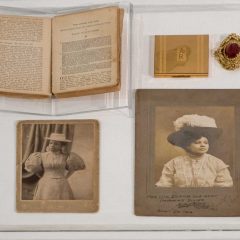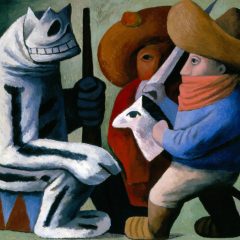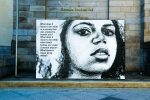Entering and Exiting Narratives
Speech/Acts at The Institute of Contemporary Art
By Huewayne Watson
Speech/Acts opened at the University of Pennsylvania’s Institute for Contemporary Art (ICA) on September 13, 2017 as a distinctly relevant and timely group exhibition curated by Meg Onli. The show features six artists whose works are concerned with the vestiges of “language,” both lived and imagined, as it persists within the black experience as well as the realms of black experimental poetry and other areas of literature and communication. The exhibition’s title, Speech/Acts, carries much of Onli’s intention. The artists and works included in the show create for the audience multiple stages of entering and exiting narratives of “blackness,” particularly as they are reconfigured, deconstructed, affirmed, acted upon, and ultimately communicated out from their lines or sources into the gallery spaces they collectively occupy.
There is something profoundly critical about Onli’s curatorial work in its effectiveness at taking seriously the act of bringing together Jibade-Khalil Huffman, Steffani Jemison, Tony Lewis, Tiona Nekkia McClodden, Kameelah Janan Rasheed, and Martine Syms to image and recollect a specific moment in blackness—the “90s” as well as describe, forecast, and perhaps perform the immediate condition of the black experience in the current cultural and sociopolitical landscape.
In many ways that are yet to unfold before the close of the exhibition in December and even for some time well after, Speech/Acts is able to move our thinking between places and spaces of frustrated speech, absolute clarity, and re-verbalizations. As Meg Onli suggests, “In linguistics, a speech act is defined as an expression that serves a performative function—it both describes and shapes reality.”
The works of art presented in Speech/Acts are steeped in the restiveness of expressing blackness and claiming it as identity. They are inexhaustibly tethered to power achieved through creativity. A primary example of this can be found in Tiona Nekkia McClodden’s Essex + Audre that mobilize the artist’s own conception of rememory, which, as it is expressed within the Speech/Acts exhibition, constructs a depiction of Washington, D.C. based poet Essex Hemphill on a digitized video loop. A few steps away from the archival footage showing Hemphill’s face as it transitions from expressions of stillness, indifference, questioning, frustration, anger, and resignation, McClodden projects a VHS recording of her hanging upside-down from boots strapped to a BDSM rig in her studio space. Interestingly, the recording is projected onto a screen bound to the same rig that is on view in the gallery. The rig, which is covered at its base with once living but now dying and withering rose petals, was installed amongst other objects, including belts, and hats, and hide, and photographs, and chains, and other symbolic items that simultaneously reify and reject blackness as it is lived and performed within the fraught terrains of race, gender, and sexuality.
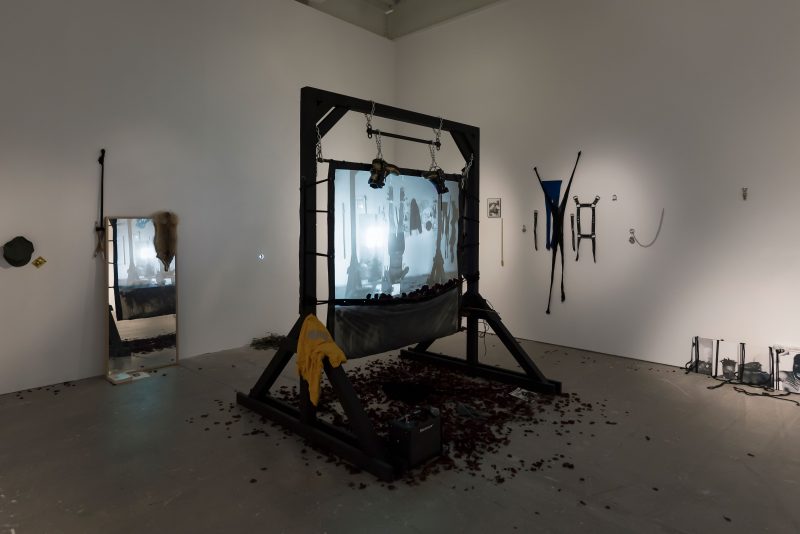
Her work effectively traverses the boundaries of what it means to transcend the multiple erasures and disruptions that was “AIDS in the 90’s.” Through McClodden’s willingness to engage a process of making visible what might otherwise be foreclosed as privately contained erotic possibilities, her art is able to attend to the subsequent evacuation of real linkages or “invocations” of the black poetic spirit that have occurred under systematic pressures from the 90s through to the present moment. Brand Johnson, Essex Hemphill, and the many unattended to black queer social lives that persisted throughout, and in spite of, AIDS in the 90s, are not lost to McClodden and her practice. They are invoked, performed, reproduced, and depicted in a collection of objects and forms brought in relation to each other by ritual acts installed as well as performed as expressions of contemporary black poetics.
Speech/Acts has effectively prompted much new thought and questions concerning the disruptions and reformulations that both engender social and cultural constructs, especially as it was attended to by a collective of contemporary black artists whose works are concerned with the distorting, stretching, consolidating, shifting and ultimately fugitivity that is blackness embodied through an engagement with language and communication. The exhibition encourages a deepening of thought about how the concept of ancestor, or a “past presence” as I define it in my own work, might spur new possibilities of black vestiges imaged contained, shared, remembered, and even transpired.
The final event as part of Speech/Acts will be held at ICA on December 13 at 6:30PM. There will be a Speech/Acts Catalog Launch with Tiona Nekkia McClodden, Morgan Parker, Kameelah Janan Rasheed, and Simone White.
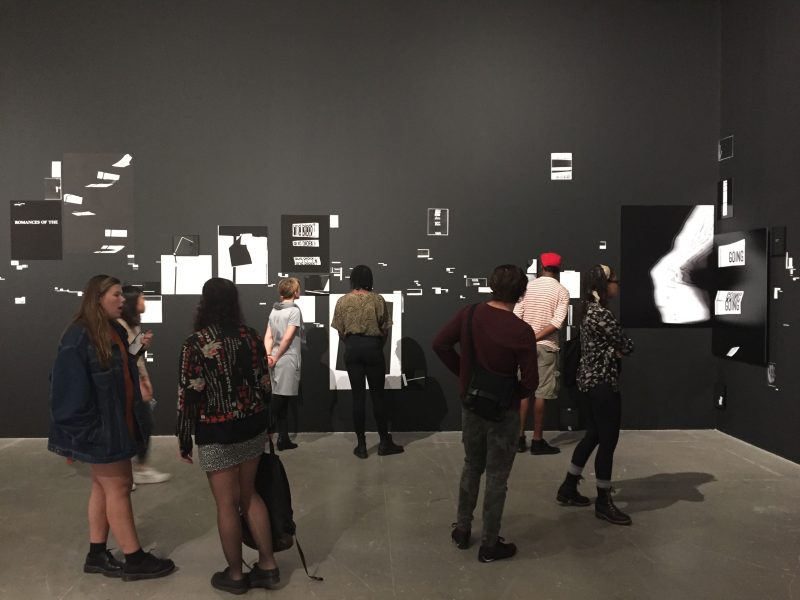
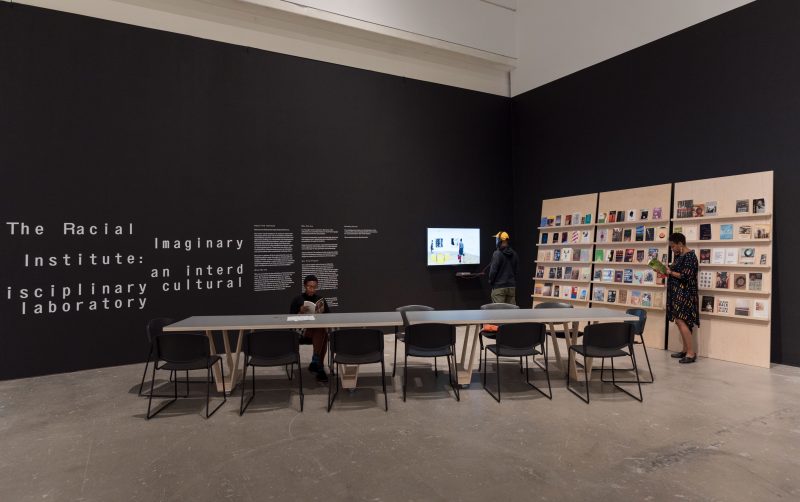
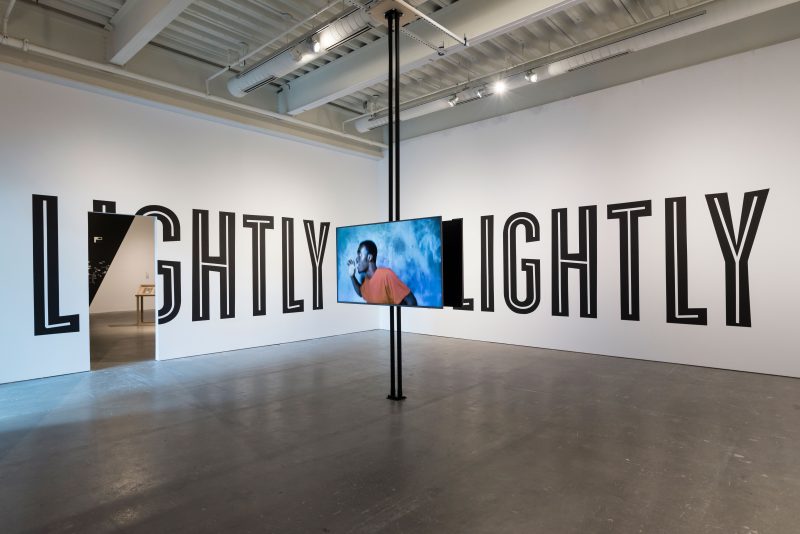
Huewayne Watson mobilizes concepts of “ancestor” to activate practices of archival research, writing, documentary photography, and printmaking as methods for attending to the multiple literacies present within communities. His work explores the culture and politics of public life as it relates to claims of autonomy and practices of memorializing past connections.


